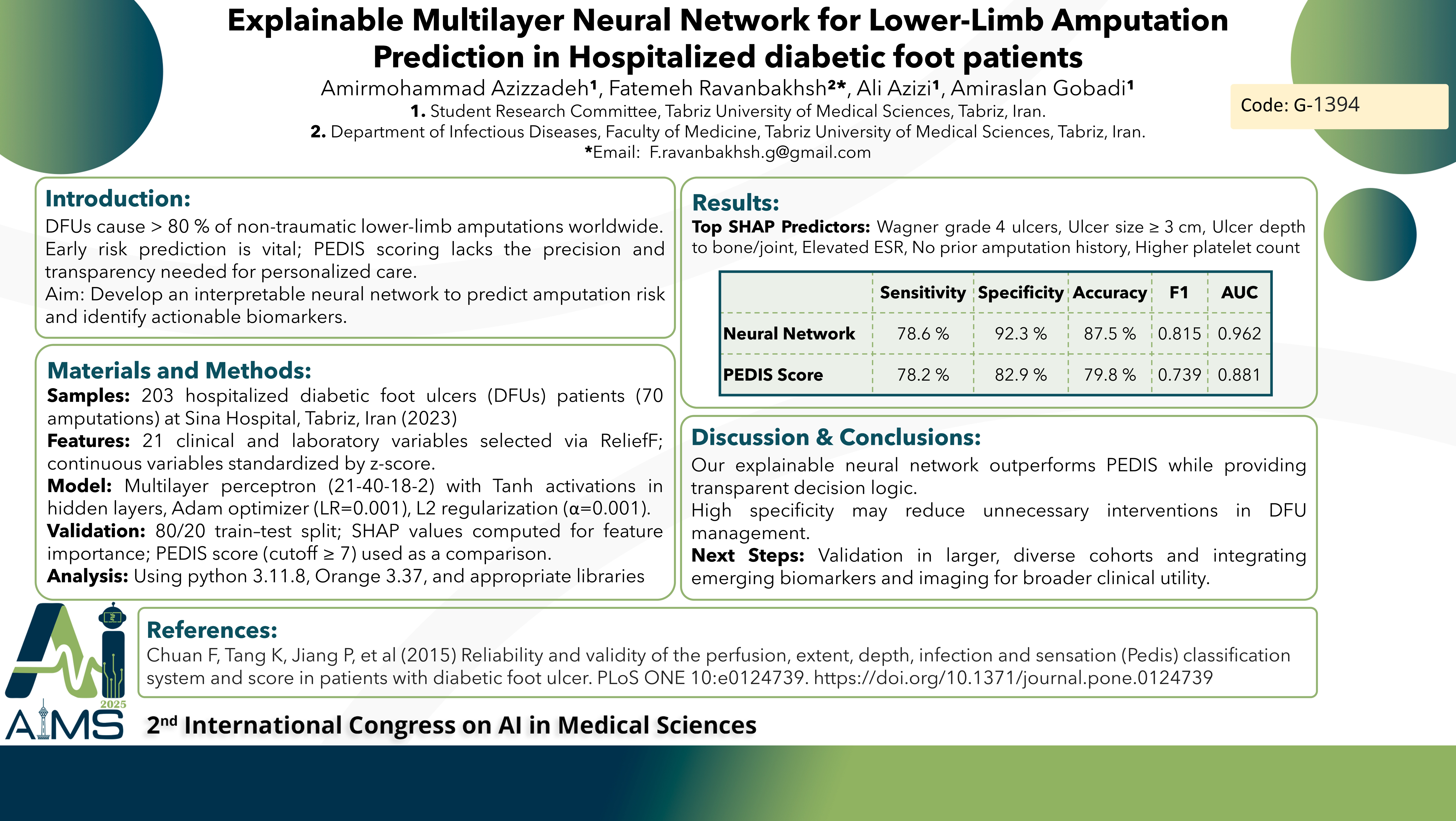Explainable Multilayer Neural network for prediction of Lower limb amputation in hospitalized diabetic foot patients
Code: G-1394
Authors: Amirmohammad Azizzadeh, Fatemeh Ravanbakhsh * ℗, Ali Azizi, Amiraslan Gobadi
Schedule: Not Scheduled!
Tag: Clinical Decision Support System
Download: Download Poster
Abstract:
Abstract
Background and aims: Diabetic foot ulcers (DFUs) account for over 80% of non-traumatic lower limb amputations globally. Early risk prediction is critical for preventing amputations, but traditional systems like PEDIS lack precision and interpretability. Explainable AI models offer a promising solution by combining accuracy with clinical transparency. This study aims to develop an interpretable neural network for predicting amputation risk in hospitalized DFU patients, identifying actionable biomarkers. Method: A retrospective cohort of 203 hospitalized diabetic foot patients (70 instances of lower limb amputation) from Sina hospital, Tabriz, Iran in 2023 was analyzed. Ethical approval was obtained from IRB (IR.TBZMED.REC.1399.571). Twenty-one features were selected via ReliefF analysis. Numerical features were standardized using z-scores. A multilayer perceptron (21-40-18-2) with Tanh activation in hidden layers, Adam optimizer (learning rate=0.001), and L2 regularization (α=0.001) was modeled. The samples were randomly divided into train and test sets with a ratio of 8:2. SHAP values were computed to interpret feature contributions. Models were implemented in python 3.11.8, Orange 3.37, using appropriate libraries. The PEDIS scoring system was used as comparison with a cutoff of ≥7. Results: The neural network achieved an AUC of 0.962, sensitivity=78.6%, specificity=92.3%, and F1=0.815, and Accuracy=87.5%. In comparison, PEDIS score achieved an AUC of 0.881, sensitivity of 78.20%, and specificity of 82.86%. SHAP analysis identified Wagner 4 ulcer, ulcer size ≥3cm, Ulcer depth of bone or joint, greater ESR values, absence of prior amputation, and higher platelet counts as top predictors. Conclusion: Our explainable AI model demonstrated clinically significant accuracy in predicting amputation risk, outperforming PEDIS while providing interpretable insights into ulcer severity and inflammatory markers. High specificity reduces unnecessary interventions, addressing a key concern in DFU management. Future work should validate the model across larger, more diverse cohorts and integrate emerging biomarkers (e.g., proteomics) for broader clinical adoption. This study highlights the transformative potential of explainable AI in high-stakes diabetic care.
Keywords
Artificial intelligence, Medicine, Diabetic foot, Amputation
